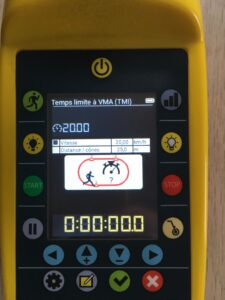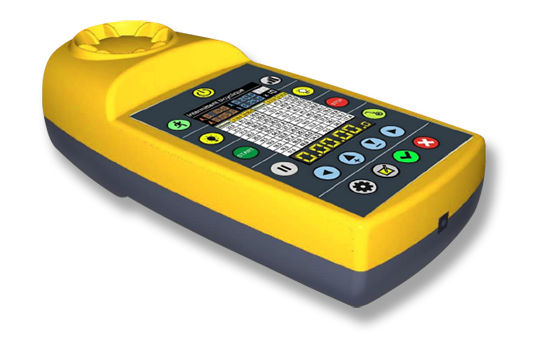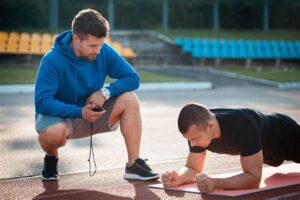Physical work
The notion of the individualization of work, once considered an abstract concept, is now firmly anchored in contemporary sporting practice. In the past, group training sessions where everyone followed the same set pace were commonplace. However, this uniform approach is now a thing of the past, replaced by a more personalized and precise approach.
Thanks to technological advances, both amateurs and professionals now have sophisticated assessment tools at their disposal, enabling them to measure and understand individual physiological parameters more precisely. Devices such as the MYcoach Tracker and the sportbeeper for VMA, enable crucial data such as maximum heart rate, specific training zones and corresponding heart rate values to be quantified. At a more advanced level, some devices can even assess lactatemia at different effort intensities.
This is where the notion of individualization comes into its own. Rather than following a generic training program, athletes can now tailor their sessions to their own physiological capacities and specific objectives. This tailor-made approach not only optimizes performance, but also reduces the risk of injury due to over-training or under-training.
In short, thanks to these technological advances and the individualization of work, physical work is no longer an abstract concept, but a tangible and effective reality, offering athletes the chance to reach their full potential safely and optimally.
1 Physiological impacts differ from one subject to another
Let’s take the case of two players with maximum heart rates (HR MAX) of 210 and 175 respectively. If the aim of the session is to work within a target zone of 170-175 beats per minute, for aerobic work at 70% to 75% of MHR, the physiological impact will be totally different. The former will be perfectly within the zone, while the latter will be at 95-100% of max heart rate, i.e. at intensities that develop PMA with lactate production!
2 Taking into account workstation requirements
Today, this individualization seems unavoidable, given the heterogeneity of physical profiles. What’s more, if we take positional requirements into account, we can see that the demands made on players are very different, for example, between axial defenders and defensive midfielders. The former need to work more on relaxation, explosiveness and speed, while the latter need to work more on PMA.
There is therefore a need to adjust specific workloads for good physical work. So, in the period of physical work, should power training be carried out by level group according to VMA? Then, throughout the season, intermittent work should take account of this measured value, and offer individualized running distances from one group to another.
This is where the sportbeeper really comes into its own, helping you to organize your sessions.
3 A question of dosage and experience
You can go even further in individualizing your workout by taking into account the “VMA support time”, also known as the “limit time”. This is defined as the player’s ability to maintain a running speed equal to his or her VMA for as long as possible (a test which can be carried out using the sportbeeper ). Among athletes, the average is around 6 minutes, with standard deviations ranging from 4 to 12 minutes. Performance is determined by lactic capacity and running economy.

It is the lactic capacity and running economy that will determine performance.
4.Maintenance of strong quality, and development of poor quality
Finally, a last element to take into account in the individualisation of physical work is the athletic profile of your players.If one of your midshipmen has a MAS of 19 km/h, should he work primarily on his MAP for his position? This does not seem to be an obligation. A good balance must be achieved in order to regularly maintain this strong quality, of course, but also to work on his explosiveness if he seems deficient in this area. Conversely, a midfielder with a MAS of only 16km/h will need to focus on improving his MAS and MAP in order to be able to adequately meet the needs of his position. It’s all about the right mix …. and experience!



